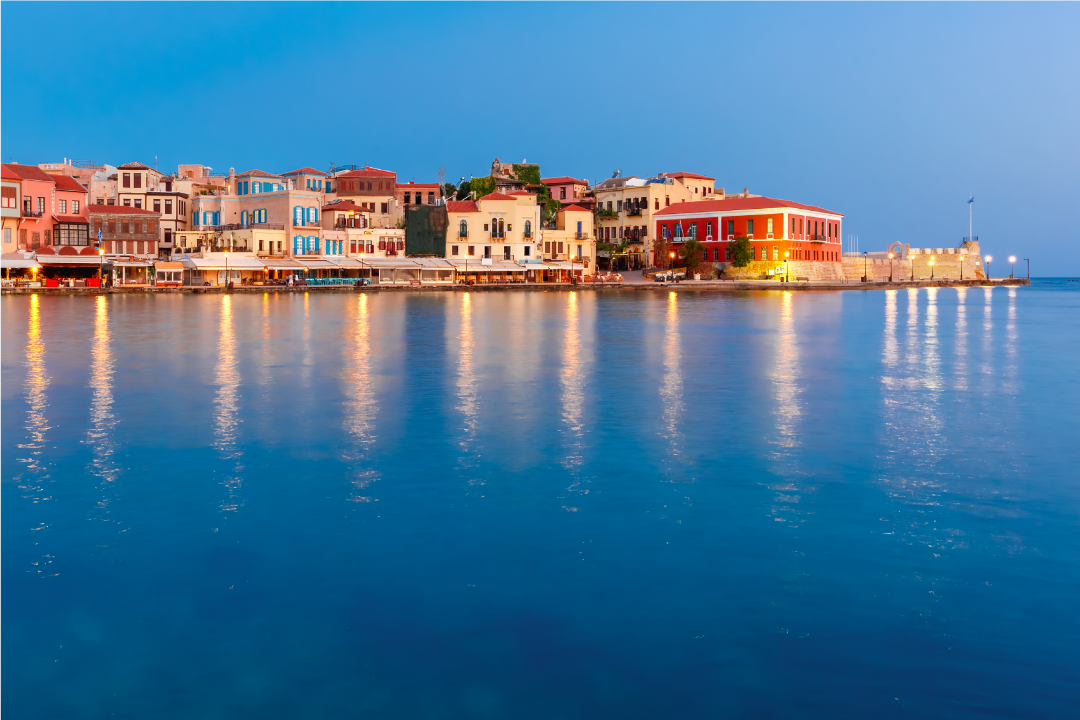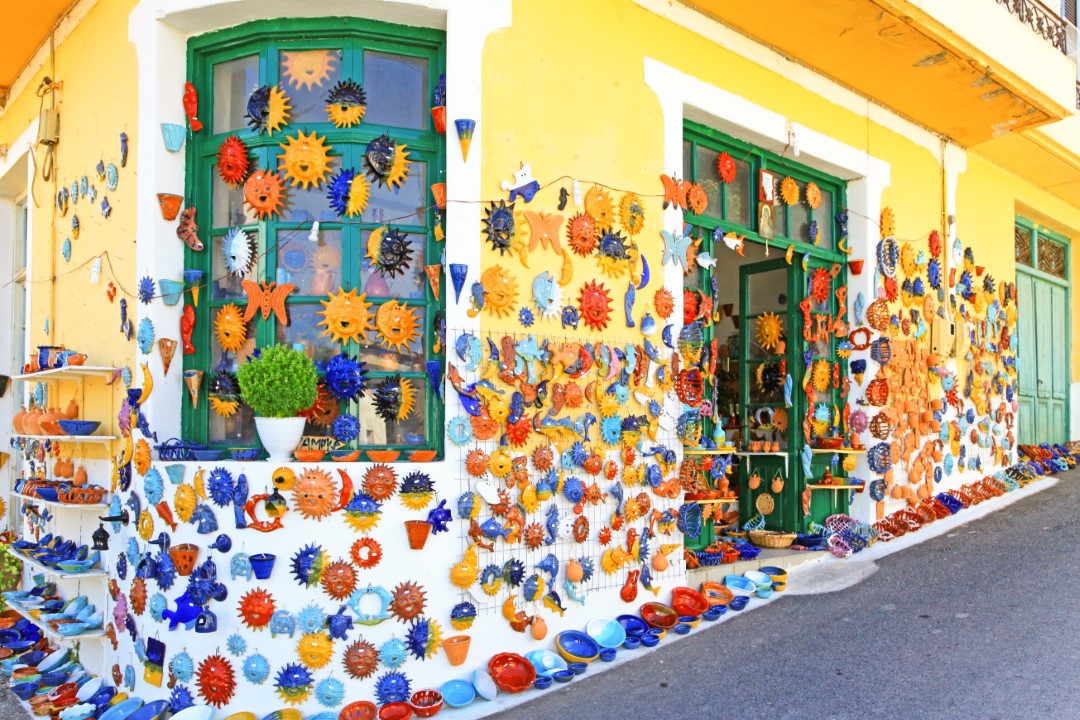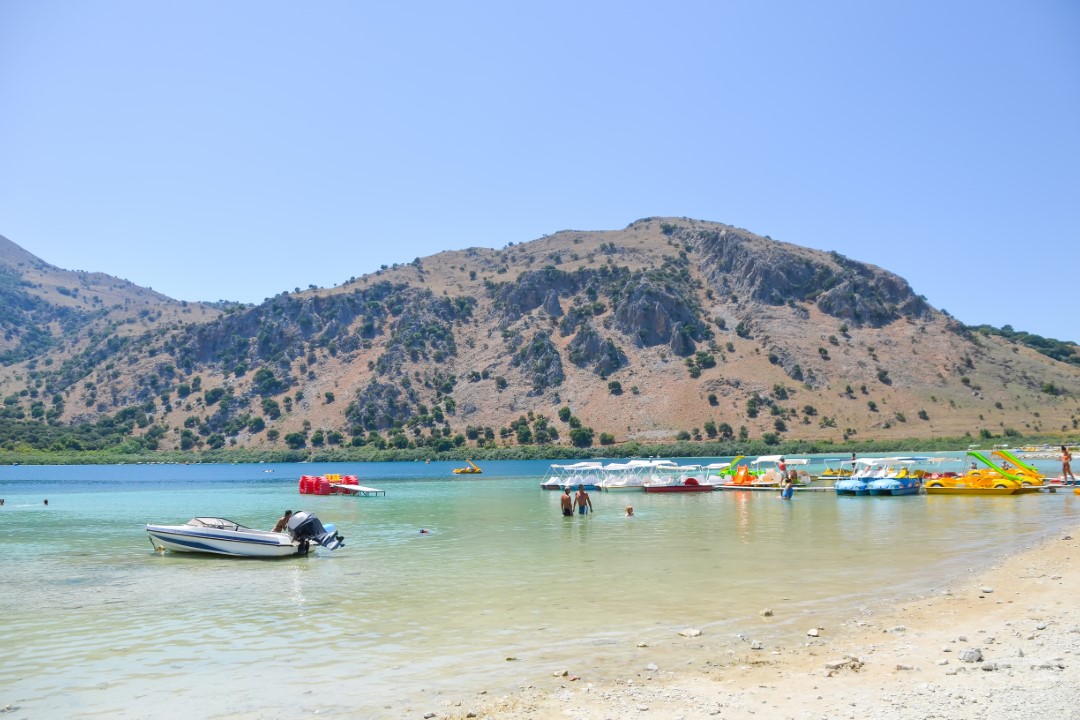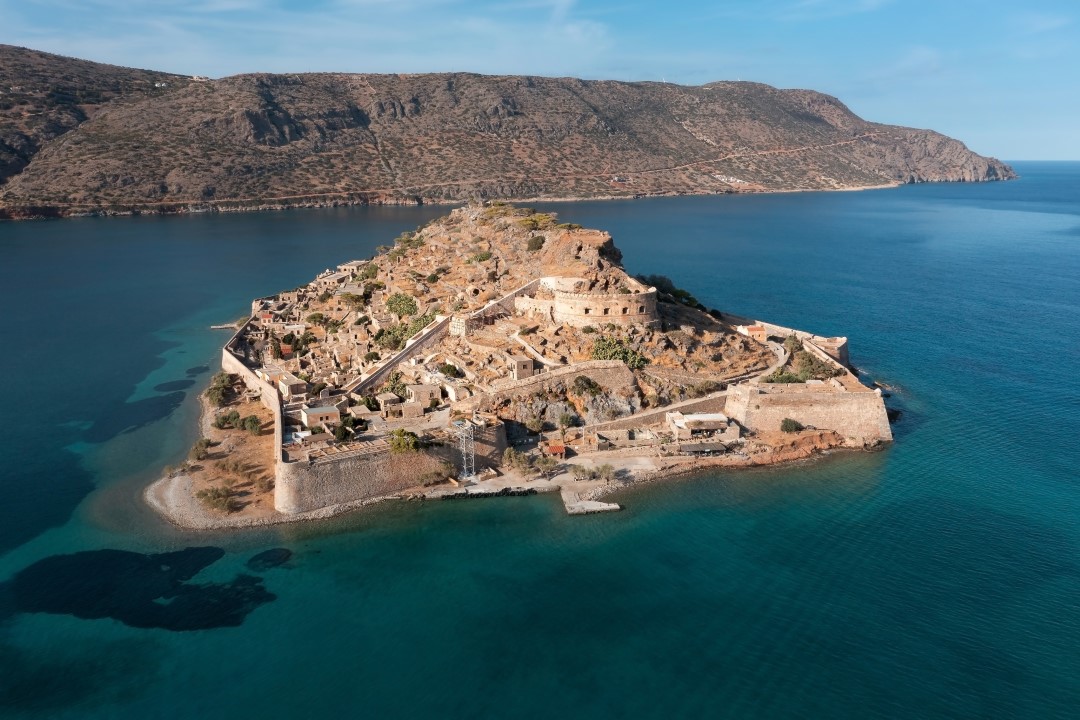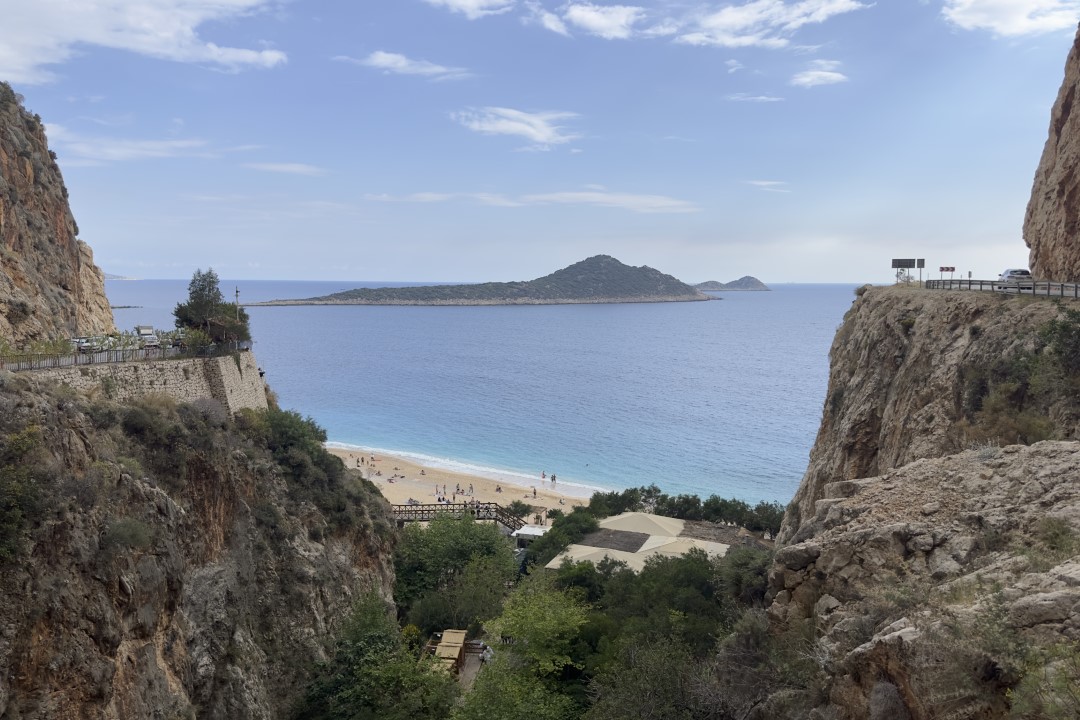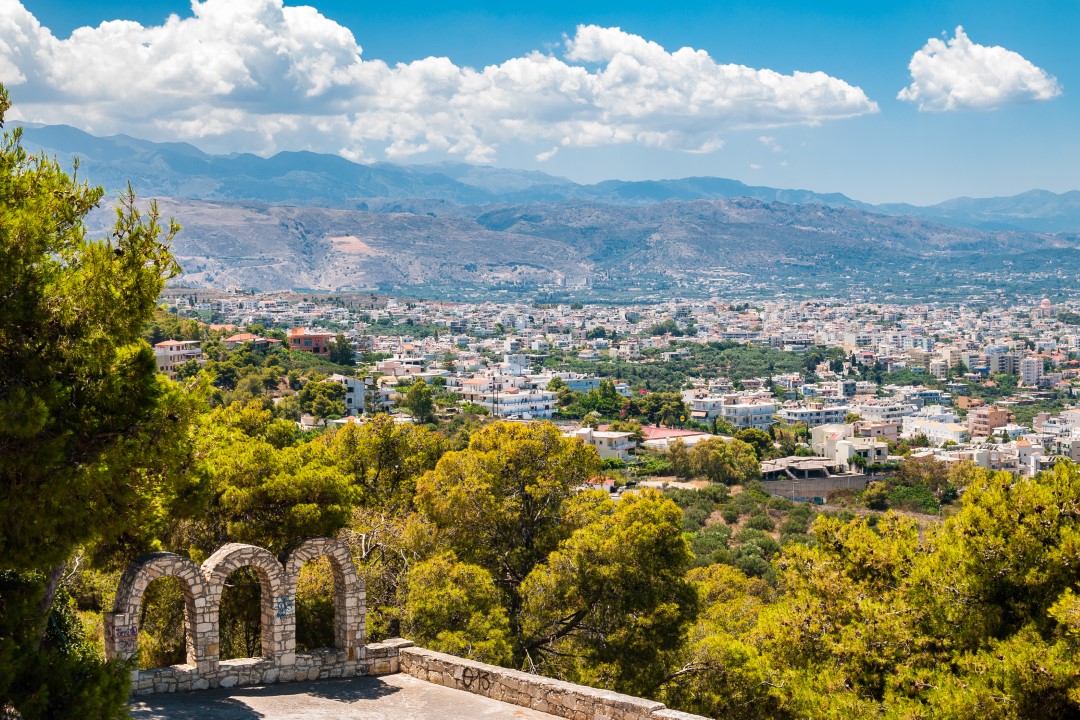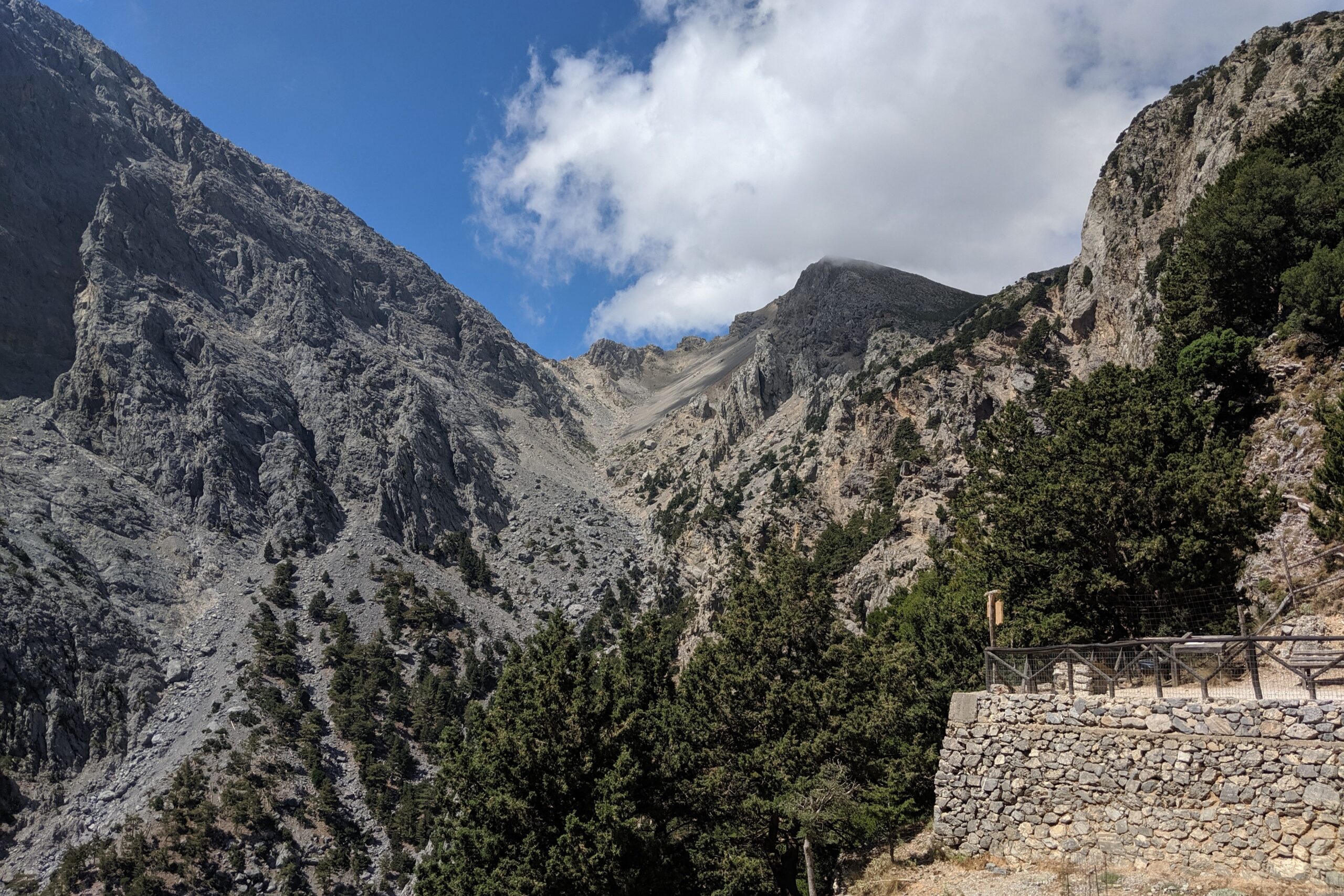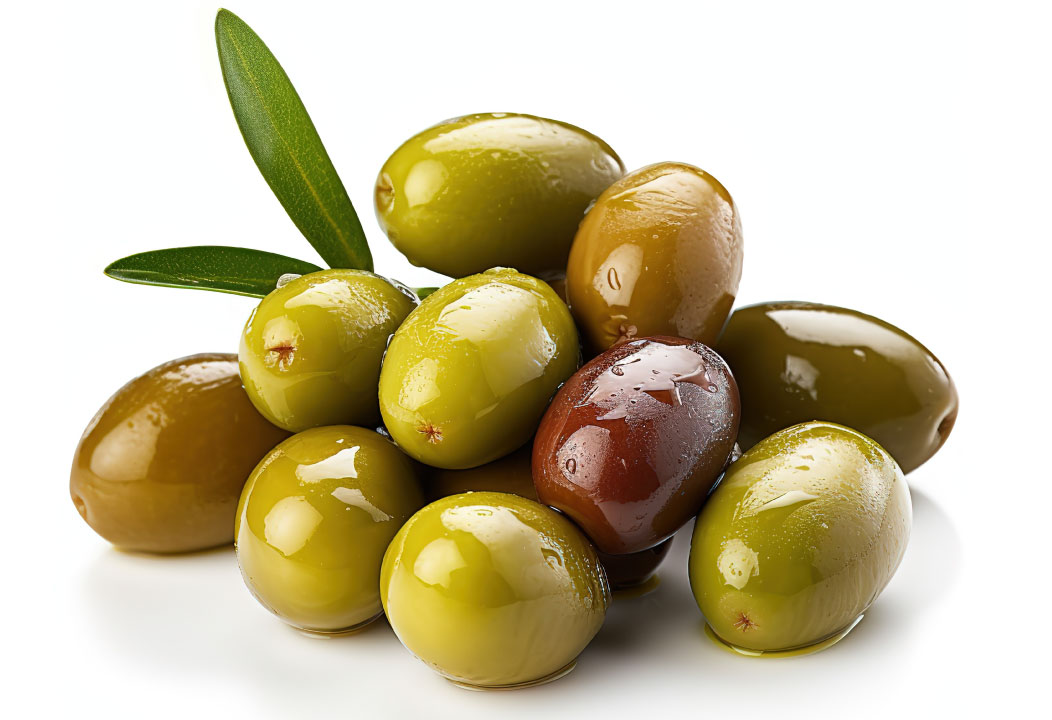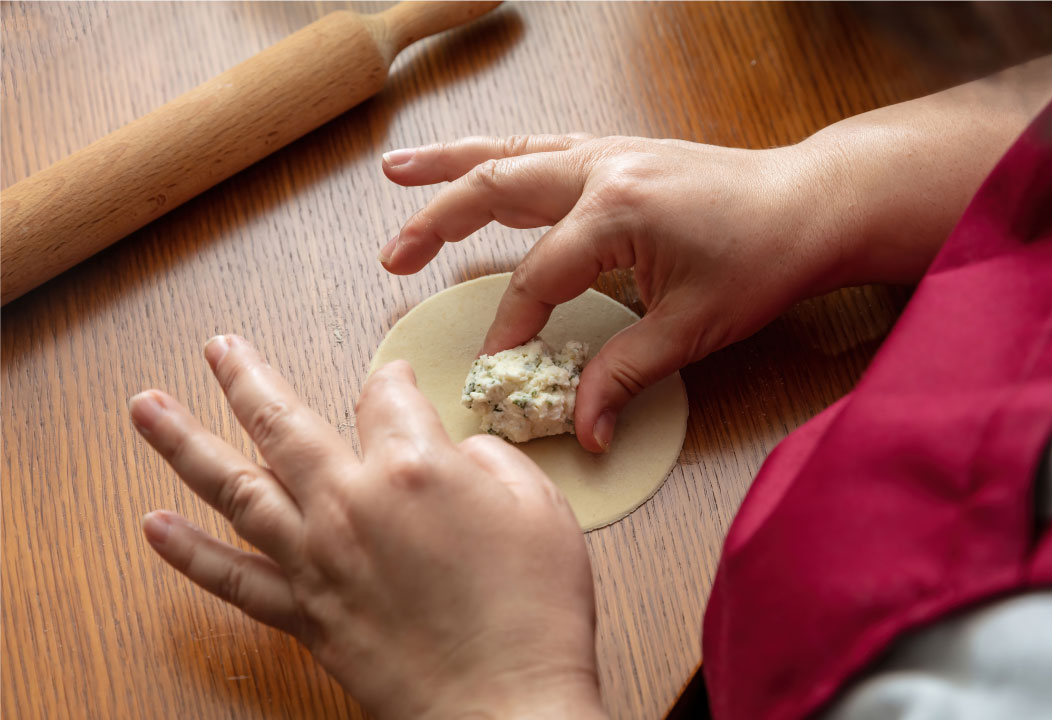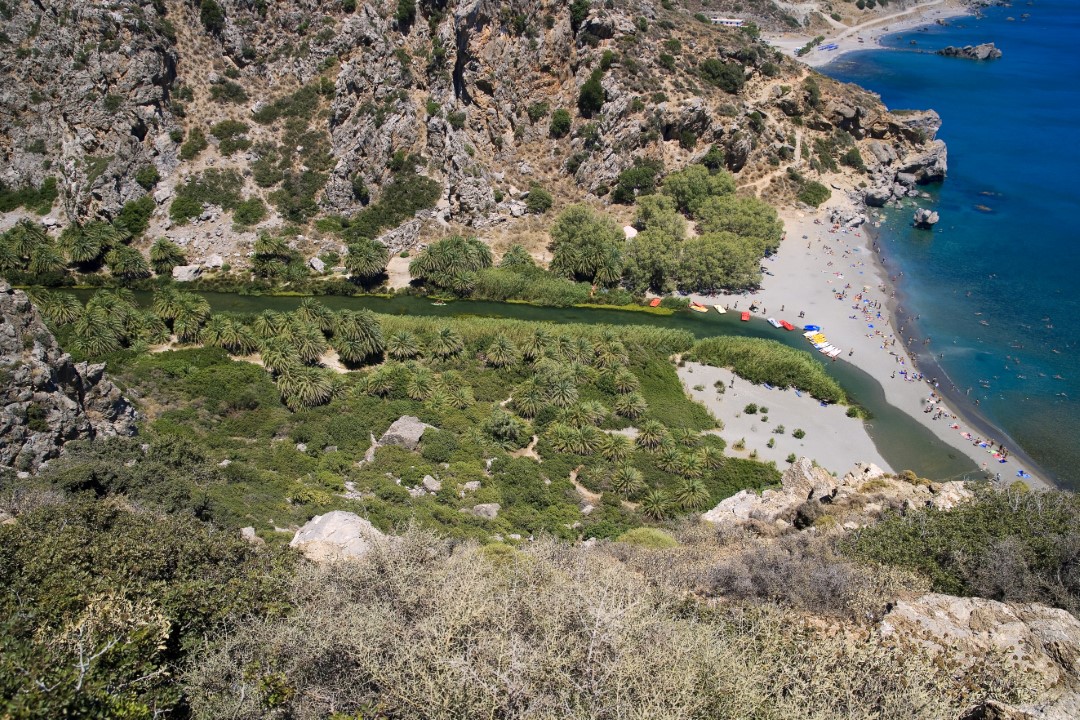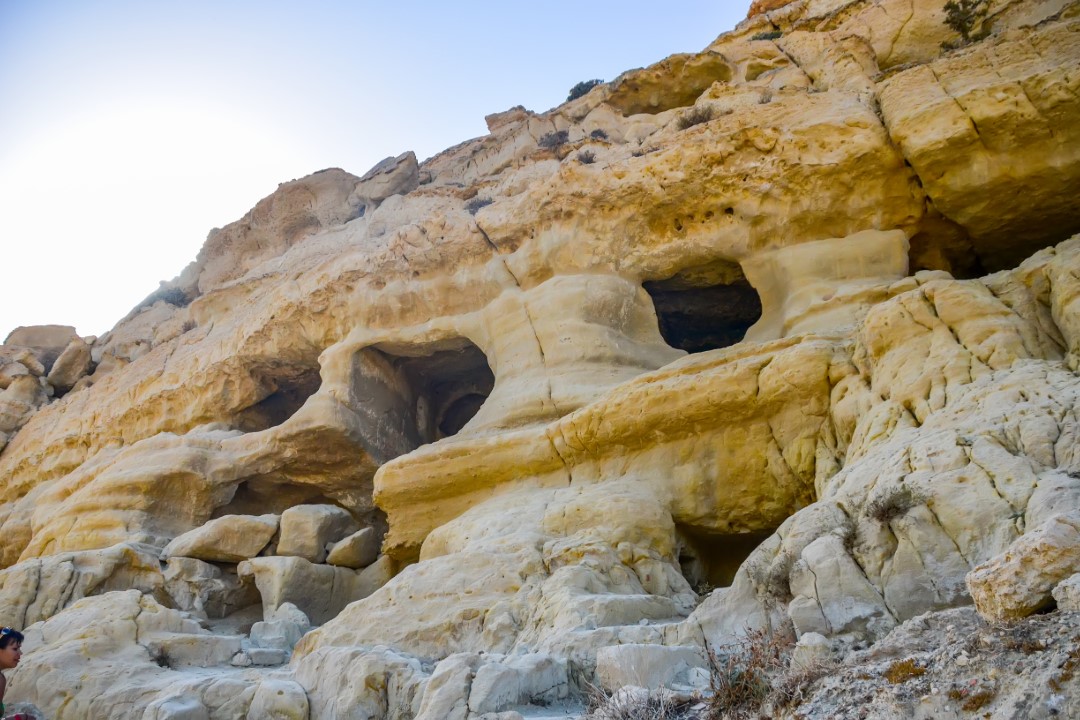Crete is the largest and most populated Greek island, located in the eastern Mediterranean Sea.
It has a rich history, diverse landscapes, and a vibrant culture. Here are some key points about Crete:
Landscapes
Crete offers a diverse range of landscapes. The northern coast features beautiful sandy beaches and bustling coastal towns, while the southern coast is known for its more secluded and rugged coves. Inland, you’ll find stunning mountain ranges, including the White Mountains (Lefka Ori) and the Dikti Mountains, with deep gorges like Samaria Gorge and Imbros Gorge. The island is also dotted with charming villages, vineyards, and olive groves.
Cuisine
Cretan cuisine is renowned for its flavours and freshness. It emphasizes locally sourced ingredients such as olive oil, vegetables, herbs, cheese, and seafood. Traditional Cretan dishes include dakos (barley rusk with tomatoes and cheese), kalitsounia (small cheese or herb pies), and souvlaki (grilled meat skewers). The island is also famous for its excellent olive oil and local wines.
Tap on each image for a larger view
Natural Wonders
In addition to its stunning landscapes, Crete boasts natural wonders like the Samaria Gorge, which is one of Europe’s longest gorges and a popular hiking destination. There are also other gorges, caves, and natural parks worth exploring, such as the Richtis Gorge, Ideon Andron Cave, and the Palm Forest of Vai.

History
Crete has a fascinating history that dates back thousands of years. It was home to the ancient Minoan civilization, known for the famous palace of Knossos. The island has seen various influences from different civilizations, including the Mycenaeans, Dorians, Romans, Byzantines, Venetians, and Ottomans. These influences have shaped its unique cultural heritage.
Archaeological Sites
Crete is home to several archaeological sites and historical landmarks besides the Minoan palace of Knossos. These include the ancient cities of Phaistos, Gortyna, and Aptera, as well as the Venetian fortresses of Rethymno and Heraklion. Exploring these sites offers insights into the island’s ancient past.
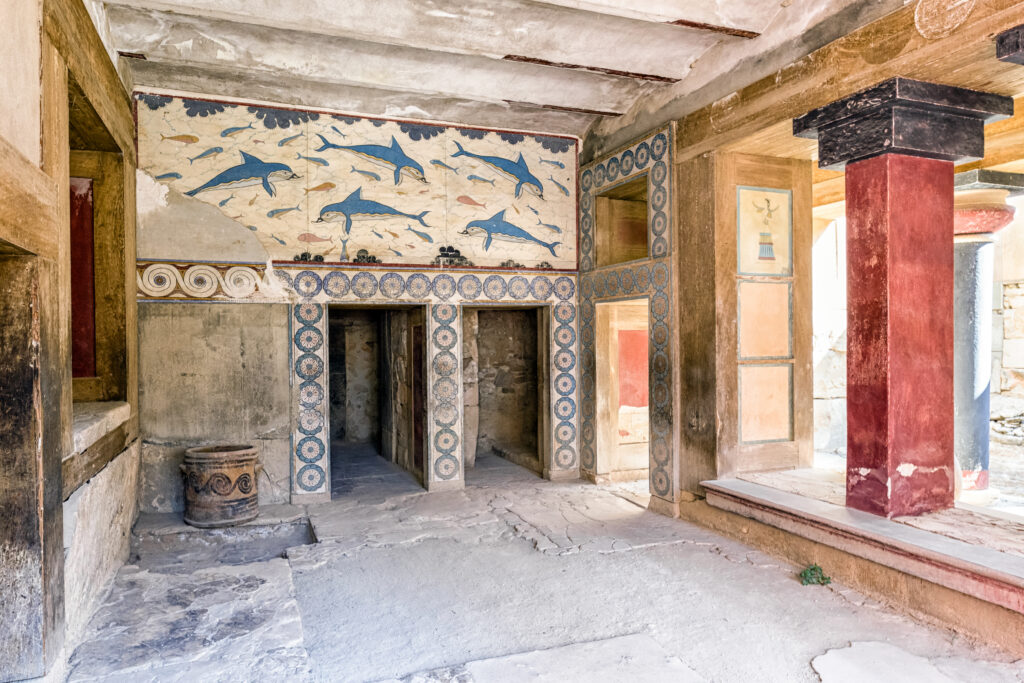

Culture and Festivals
Crete has a vibrant cultural scene with a strong traditional heritage. Traditional music and dance are an integral part of Cretan culture, and you may have the chance to witness performances during festivals and celebrations. Cretans celebrate various religious and cultural events throughout the year, such as the carnival, Easter, and local patron saint festivities.
Choosing one most impressive things about Crete is challenging, given its multitude of attractions and unique qualities. However, if we had to highlight one aspect, it would be the island’s rich historical and cultural heritage.
Crete’s history spans thousands of years, and it was the birthplace of the ancient Minoan civilization, one of the earliest advanced civilizations in Europe. The remnants of this civilization, such as the Palace of Knossos, provide a glimpse into a sophisticated and mysterious past. The architectural achievements, intricate frescoes, and advanced urban planning of the Minoans are awe-inspiring.
Furthermore, Crete’s history is intertwined with various civilizations, including the Mycenaeans, Byzantines, Venetians, and Ottomans, each leaving their mark on the island. The cultural fusion and influences are visible in the architecture, cuisine, and traditions of Crete. The island’s rich heritage is not limited to its ancient past but extends to its traditional music, dance, folklore, and celebrations. Cretan music, characterized by the distinct sound of the lyra, and energetic dances like the syrtos, reflect the island’s vibrant cultural tapestry.
Moreover, Crete’s resistance against occupation during World War II is a testament to the island’s strong sense of identity and independence.
Overall, the most impressive thing about Crete is the depth and breadth of its historical and cultural heritage, which continues to captivate and inspire visitors from around the world.
For ideas on specific locations, visit the pages on Crete on the official website of the Greek National Tourist Organisation, “Visit Greece”, also found at the footer of each page. You can use Google Maps below with our hotel’s location placed in the departure and the nearby Lake of Kournas as a suggested destination.
Driving directions from Villa Irini to Lake Kournas
 English
English 



